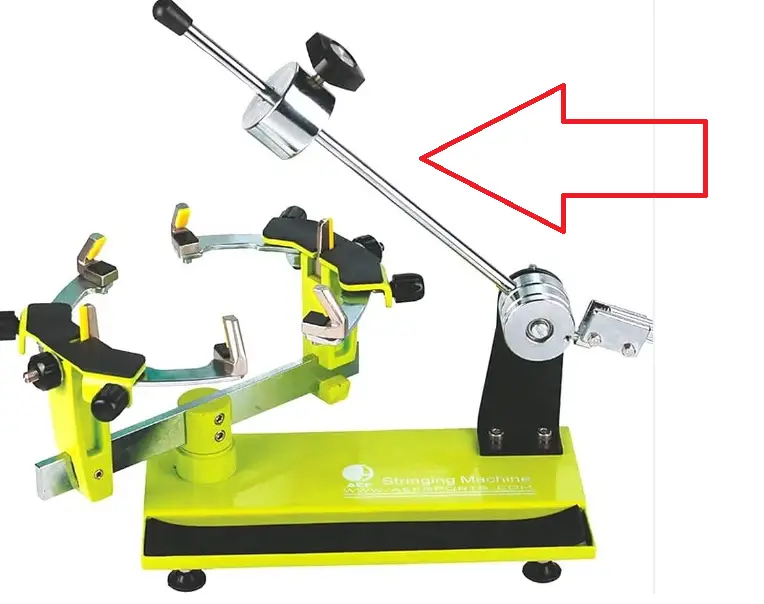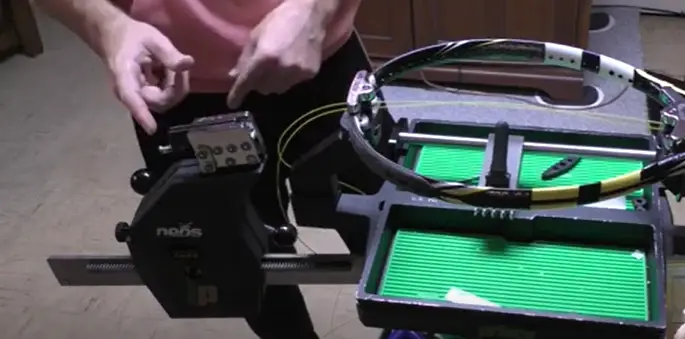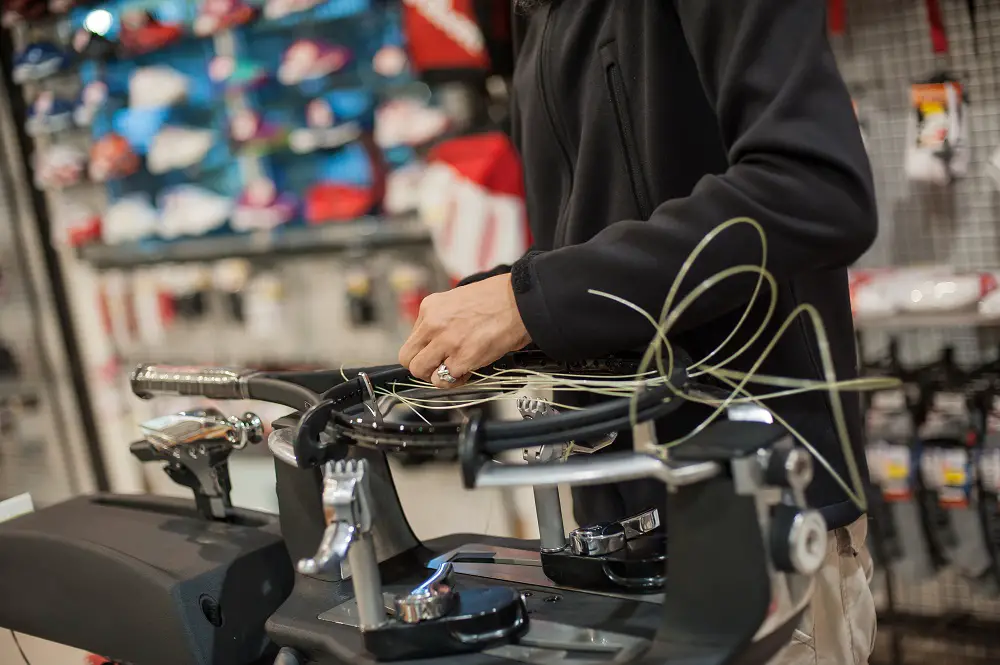If you are looking to invest in a tennis racket stringing machine, it’s very important to understand a bit of their background and the different types of these machines in the market.
However, before we get into the types of tennis racket stringing machines, here’s a quick rundown of why most players and coaches at the highest level swear by them.
- Consistency in String Tension
- Customizable to an Individual’s Style
- Cost-Effective Despite High Initial Investment
- Time-Saving
- Higher Quality Than When Done by Hand
You ask any professional tennis player or a coach and you would find a bit of a consensus among them – tennis racket stringing machines are an essential tool to possess and for a wide variety of reasons.
We will cover these reasons in depth in another piece but for now, it can be said with a reasonable conviction that if you, as an individual, or as a coach looking after multiple players’ game, can afford a tennis stringing machines, you should look to make that investment.
Also, if you are still unsure whether or not to invest in this machine, our ‘Who Should Buy a Racket Stringing Machine?‘ guide should help.
Once you have taken that call, what you must focus on is the different types of stringing machines.
Based on their characteristics and costs involved, one of them could suit you and you could then look to purchase the brands within that category. In this article, we look at the three main types of racket stringing machines.
With that being said, we now look at the different types of tennis stringing machines and how to distinguish them.
Also Read:
What are the different types of tennis racket stringing machines? There are three main types of tennis racket stringing machines: drop weight machine, manual crank/lockout machine and electronic machine.
All three of them achieve the same goal of helping players string their tennis rackets but what distinguishes them is the manner in which they operate, the time taken for their operation and the cost associated with owning them and for maintenance.
Table of Content
Digging into the Tennis Racket Stringing Machines Types
Here’s a lowdown of how each of the three stringing machine types operate.
Drop Weight Machines
The Drop Weight Machines for tennis racket stringing are the most traditional form and a manually-operated weight is used to apply the requisite tension on the strings.
Here’re the typical steps that are used to make a drop weight machine work.
- The racket is clamped in place on the machine.
- The strings are threaded through the clamps and tensioned using a weight.
- The weight is then lifted and locked in place, holding the tension on the strings.
- The excess string is cut, and the strings are tied off.
As mentioned above, the key element in a drop weight stringing machine is the manner in which the tension is applied – it uses a weighted bar that helps the user get the expected tension levels.
The image below shows the weighted bar that needs to be moved each time to get the desired tension.

Drop weight machines are generally more affordable than electronic machines, but they require more manual effort and may not be as accurate in their tensioning. They take a lot slower than the other types which do not make them a ‘crowd favorite’.
On the other hand, a drop weight machine doesn’t require as much maintenance as the others while they are also the most affordable.
So if you are a beginner looking to string your racket, this could be a good starting point of a purchase.
Manual Crank or Lockout Machines
The second type of tennis racket stringing machine is known as a manual crank or a lockout machine. This machine uses a hand-cranked system to apply tension to the strings.
Unlike the drop-weight method of stringing, the lockout machines necessitate the calibration of the string tension which makes it slightly more cumbersome. This calibration needs to be checked every now and then and tweaked if it’s not reading the figure you are looking at.
The position of the clamp also needs to be changed in a lockout machine for mains and crosses.
Here’re the typical steps that are used to make a lockout machine work.
- The racket is clamped in place on the machine.
- The strings are threaded through the clamps and tensioned using a hand-cranked system.
- The crank is turned to increase or decrease tension, and a tension gauge may be used to monitor the tension level.
- The excess string is cut, and the strings are tied off.
Like the drop weight machines, the manual crank machines are also less expensive than the electronic version, but they require more manual effort. The accuracy might not be the best either.
Again, beginner stringers or players who do not want to spend a lot of money but still want to string their own rackets can use this machine.

So, what’s the difference between a drop weight and a manual crank stringing machine?
Both, drop weight machines and manual crank machines are similar in that they both use a mechanical system to apply tension to the strings, but they differ in the way that tension is applied.
Drop weight machines use a hanging weight to apply tension to the strings. The weight is lifted and locked in place, and the tension is held on the strings until the weight is released.
This type of machine requires less manual effort than a manual crank machine because the tensioning weight does most of the work.
On the other hand, lockout machines use a hand-cranked system to apply tension to the strings.
The tension is increased or decreased by turning the crank, and a tension gauge may be used to monitor the tension level. This type of machine requires more manual effort than a drop weight machine because the tension is manually applied by the user.
Manual cranks, however, do take lesser time than a drop weight mechanism for stringing.
Overall, the key difference between drop weight machines and manual crank machines is the way in which tension is applied.
Drop weight machines use a hanging weight, while manual crank machines use a hand-cranked system. Drop weight machines are generally considered to be more user-friendly and require less manual effort, while manual crank machines may be more affordable and offer more control over the tensioning process.
Also Read:
Electronic Machines
As the name suggests, these tennis racket stringing machines are electronic in nature and that makes them both, the costliest and most accurate. Not to mention they are the easiest to use and quickest as well.
Electronic machines are typically used at all the big tennis tournaments around the world.
How they work is they use a motorized system to apply tension to the strings, making them more advanced and expensive than drop weight machines. Here’re the steps involved in electronic machines stringing:
- The racket is clamped in place on the machine.
- The strings are threaded through the clamps and tensioned using a motorized system.
- The tension is adjusted using a digital display or keypad.
- The excess string is cut, and the strings are tied off.
Electronic machines can be programmed to apply precise tension to each string, which can result in a more consistent and accurate feel on the court.
There are also hybrid machines that combine elements of both drop weight and electronic machines. For example, some machines may use a drop weight system for the mains and an electronic system for the crosses.
Which Racket Stringing Machine Type Should I Buy?
Each of the aforementioned types of racket stringing machines come with its own set of advantages and disadvantages and you could go with either based on your situation.
For instance, if you aren’t very conscious of the cost but need your rackets to be strung quickly and more accurately than the rest, purchasing an electronic machine is a no-brainer.
Similarly if you are just starting out as a beginner stringer, then it might be a good idea to try out the drop weight machine. It might be the slowest type among all the three mentioned but it’s way more inexpensive than the electronic one and takes lesser effort in terms of calibration than the lockout machines.
Crank or lockout machines are used by those who do not have a problem with the consistent calibration of the system but need the stringing to be in an inexpensive manner and quicker than the drop weight machine.
How to Use a Tennis Racket Stringing Machine?
This deserves a separate article! Which is why we have our step by step guide that will do a great deal in helping you master the art of using a tennis racket stringing machine here.


